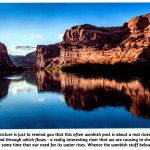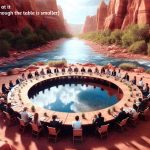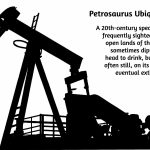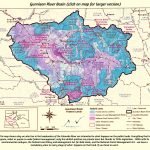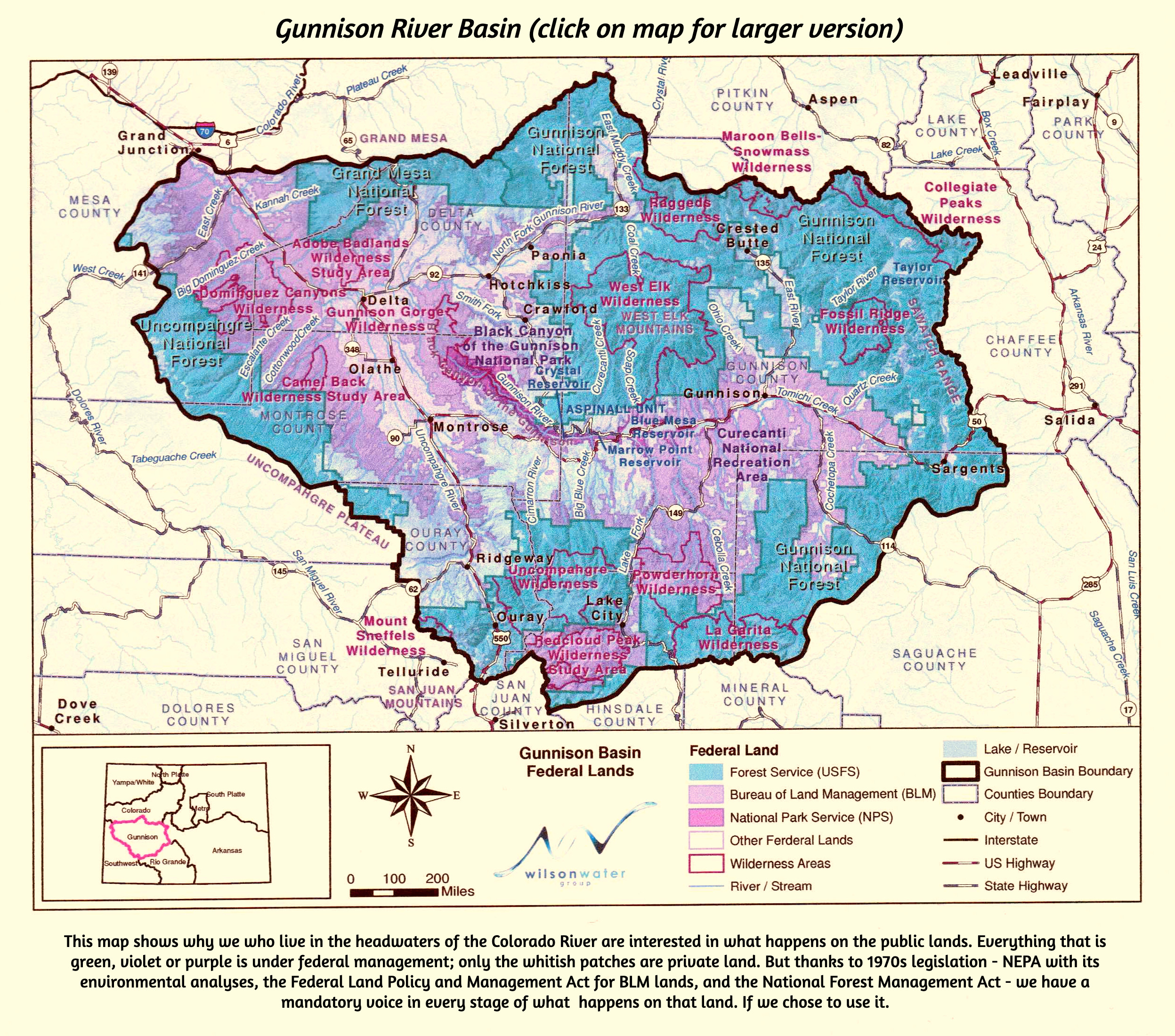
We are an empire now, and when we act, we create our own reality.
– Journalist Ron Suskind quoting
unnamed George W. Bush advisor in
a 2004 New Yorker essay.
Get used to it: I’m probably going to be using that quote at the head of every post here for the near future at least; nothing so perfectly summarizes the history not just of the past several months, but of the past century, beginning – so I would argue – in the 1920s with the first crash of over-financialized hog-trough capitalism, resolved with the construction of Hoover Dam, and the birth of a growing government partnership with the private sector in financing and building what we came to accept as 20th century reality.
Since the 1990s and the creation of the internet and virtual reality, we have seen the process of imperial reality creation speed up – now to a literally unbelievable speed with leadership standing firmly athwart the line between the merely incredible and the absolutely ridiculous.
Science has been puffing and panting along behind the juggernaut of industrial civilization for that whole century, trying to point out the’ real realities’ we have to ultimately confront and learn to live with, real realities whose consequences for what we have been doing are measurable, documentable – and increasingly alarming. So alarming that the Trumpty-Mumpty masters of the universe are telling us we can ignore, deny them. No, not can, but will deny and ignore them, because in their new reality such things as ‘climate crisis,’ ‘social inequity,’ ‘resource depletion’ (including potable water) either do not exist, or are deported, or are otherwise under control.
A Big Beautiful Joke: How many Republicans does it take to change a light bulb? Answer: None; Trump just says I’ve fixed it, and the Republicans sit in the dark and applaud….
Okay – moving on. I’ll begin with a couple of corrections to the last post, about the Trumpish assault on the public lands, specifically the lands managed by the Bureau of Land Management (BLM). First, the correct name of the law mandating the BLM Resource Management Plans that the MAGAs don’t like, is the Federal Land Policy and Management Act (FLPMA). And second, the Gunnison Sage Grouse is not a subspecies of Sage Grouse; it has been recognized as a distinct species. My apologies, and thanks to Arden Anderson, a retired BLM agent living in Gunnsion.
But now – well, I’m confused.
In my last post here, I got about halfway through some historical perspective on a bill proposed by my occasional congressional representative, Jeff Hurd, a lawyer from Grand Junction. (By ‘occasional representative,’ I mean I occasionally feel represented by Congressman Hurd, a definite improvement over the Repugnican Lauren Boebert whom he replaced.) But – now he’s got me almost as confused as Trump gets us all on tariffs.
Hurd’s bill to the House is for a ‘Productive Public Lands Act’ (‘PPL Act’). In Hurd’s own words: ‘This bill would force the Bureau of Land Management to reissue nine Biden-era Resource Management Plans (RMPs) which locked up access to viable lands throughout Colorado and the West. A reissue of these RMPs will put us on a path to energy dominance allowing for a more secure and prosperous United States.’ This is a direct legislative response supporting Trump’s trumped-up ‘national energy emergency,’ announced his first day in office with an executive order titled ‘Unleashing American Energy.’ One ‘First Day’ promise he did keep. We will look at more closely at the ‘national energy emergency’ in the next post (if it is still part of official reality).
Meanwhile, however, at about the time my post about Hurd’s PPL Act was appearing in your inbox, Hurd announced that he was introducing in the House, as a bipartisan legislation proposal, the bill that Colorado Democrat Senator William Bennett had just introduced in the Senate, for a ‘Gunnison Outdoor Resources Protection Act’ (‘GORP Act’).
The GORP Act, if passed, according to Senator Bennett’s website description, ‘will protect over 730,000 acres of public lands in Western Colorado, safeguarding the region’s local economy, world-class recreation, ranching heritage, wildlife habitat, and clean air and water.’ It’s a true mulitple-use bill, in the spirit of the FLPMA, that includes:
- Enlargement of existing wilderness areas into undeveloped land around their edges;
- ‘Protection Areas’ designated to protect the natural and undeveloped character of public lands;
- ‘Recreation Management Areas’ to provide for sustainable management of both motorized and unmotorized recreation;
- ‘Special Management Areas’ set aside for ‘broadly conserving, protecting, and enhancing the natural, scenic, scientific, cultural, watershed, recreation and wildlife resources’;
- A ‘Rocky Mountain Scientific Research and Education Area’ in the upper East River valley, above and below the Rocky Mountain Biological Lab in Gothic;
- ‘Wildlife Conservation Areas’ to conserve and restore wildlife and wildlife habitat (including the Gunnison Sage Grouse);
- Existing mineral claims or oil and gas leases can be developed, but there will be no further withdrawals for minerals or oil and gas on the public lands covered by GORP, and the oil and gas rights under some of the land can only be developed with no surface disturbance (by horizontal drilling or tunneling).
If the GORP bill were to pass, it would require new Resource Management Plans that would, in Repugnican terminology, be ‘locking up’ a large quantity of public land for a diversity of uses valued in the local economy and culture – with no accommodation for the ‘national energy emergency.’ The GORP bill includes practically everything the ‘Productive Public Lands’ bill wants to undo in nine existing BLM Resource Management Plans.
It is not, in short, a bill anyone would expect from even a Republican, let alone a Repugnican – and certainly not from the congressman who put the ‘Productive Public Lands’ bill before the House. I’ve submitted a question to Congressman Hurd asking for his rationale, in submitting one bill that essentially contradicts another bill he had submitted. I’ve received no answer yet, but will pass it along when I do.
The simplest explanation – maybe just simplistic, fitting the Trumpty-Mumpty era – is that Rep, Hurd knows that the ‘Productive Public Lands’ bill will probably be passed by the Republican-majority House (the usual one or two vote ‘landslide’), while the GORP Act has practically no chance of passing. But proposing it will make him some friends among the conservationists and environmentalists that continue to be a growing part of his district, grasping at any straw in these times. Or maybe, I’ve heard it suggested locally, his work session with the Gunnison County Commissioners, between his presentation of the two bill, was a low voltage version of the biblical bolt that struck Saul/Paul on the road to Damascus. The commissioners did make a well-informed and passionate defense of the grassroots input on and support for the amended Gunnison Sage Grouse RMP that Rep. Hurd’s PPL Act would throw out.
And the amended Sage Grouse Resource Management Plan deserves a defense, in what’s left of our democratic system of governance. Rep. Hurd and other Repugnican supporters blame these RMPs on President Biden, but all President Biden did was what other presidents this century, excepting Trump, have done: they have stood back and let the 1970 National Environmental Policy Act, and the two 1976 Acts, the Federal Land Policy and Management Act and the National Forest Management Act, work as Congress intended, back in the way-too-short 1970s ‘enviro-populist’ era.
That legislation happened before the Supreme Court turned our elections over to the plutocrats who only want to get richer. From the mid-1960s through the 1970s, the people elected a series of Congresses that actually performed the will of the people, who saw the forests dying from acid rain, rivers too polluted to even swim in let alone drink from, air sometimes unbreathable, and who wanted to protect and restore what was still salvagable on the planet after a century of pedal-to-the-metal, balls-to-the-wall industrial capitalism. That, in at least my mind, is one of the times when America was great. And needs to be great again in that way, even greater as the challenges escalate – but that won’t happen during the Trumpty-Mumpty hog-trough administration.
The GORP bill is a synthesis of portions of the plans evolving since the turn of the century to keep the Gunnison Sage Grouse viable as a species, and also of a ‘Gunnison Public Lands Initiative’ that has been evolving since 2014. The ‘GPLI’ is a collaboration involving ranchers, motorized and non-motorized recreational users, whitewater and flatwater interests, and other stakeholders whose joint purpose is to strike a balance between conservation (in culture as well as nature), preservation, and tourism on the 2.5 million acres of public lands in Gunnison County – four-fifths of the County. Sage Grouse concerns spread the GORP bill into counties beyond Gunnison County where the bird is found in small populations.
The national public land agencies – mainly the BLM and Forest Service – accept the need for public participation in resource management planning, and respect the level of knowledge that most stakeholders bring to the table; but they also have top-down management priorities to work into the mix, and are a little reluctant about ‘citizen initiatives’ with a more local economic and ecological focus. Senator Bennett used the Gunnison Public Lands Initiative as a foundation document for his GORP bill, but the U.S. Forest Service mostly ignored it in the recent Grand Mesa, Uncompahgre and Gunnison National Forest planning process for the next decade.
They prefer citizen response to alternatives established (with citizen participation) through the NEPA environmental analysis procedure; various alternative management action plans are outlined and analyzed according to the exhaustive (and often exhausting to read) environmental analysis that had been assembled. There is always a ‘no action, continue current management’ alternative; there is usually a ‘heavy industrial’ alternative that the environmental and recreational users don’t like, a ‘heavy recreation and preservation’ alternative that the loggers and miners don’t like, and gradations between leading to a ‘preferred alternative’ that tries to balance the various multiple uses in a way that everyone can live with.
So that is where we stand now: Senator Bennett and Representative Hurd are presenting the grassroots, multiple-use ‘Gunnison Outdoor Resource Planning Act’ bill (GORP Act) in the two houses of Congress, with thirty West Slope participating organizations signed on, including eleven County Boards of Commissioners. And Representative Hurd is presenting in the House of Representatives the ‘Productive Public Lands Act bill (PPL Act). The GORP bill, if passed, would require Resource Management Plans of exactly the type that the PPL bill, if passed, would seek to rescind, in favor of a top-down, single-use bill to ‘Unleash American Energy.’
Next time, we will take a deeper look at the unleashing of American energy on our public lands. (And after that, I promise, it’s back to the river – the beautiful, the beautiful and also useful river.
***
ENLARGE PHOTO HERE
